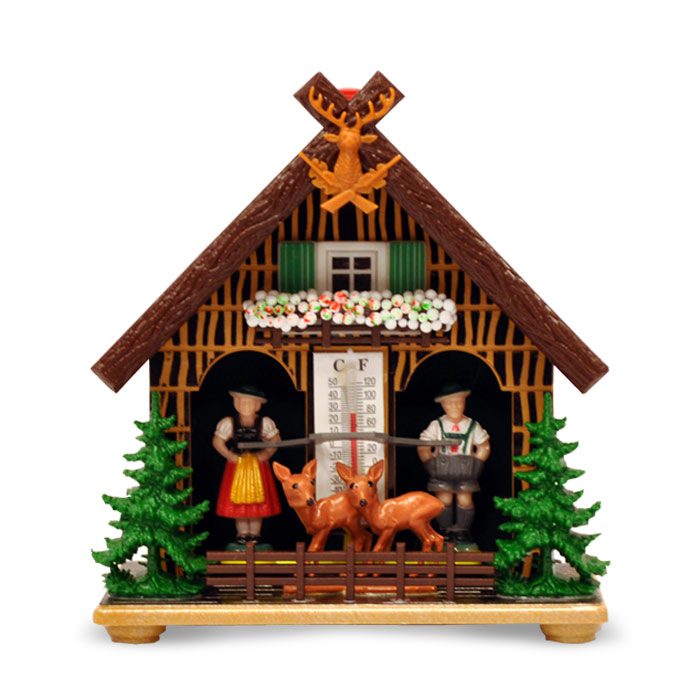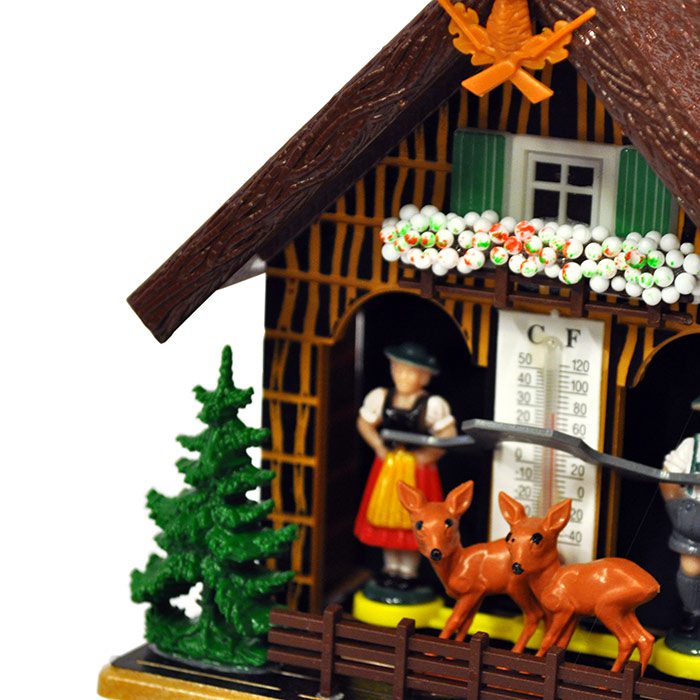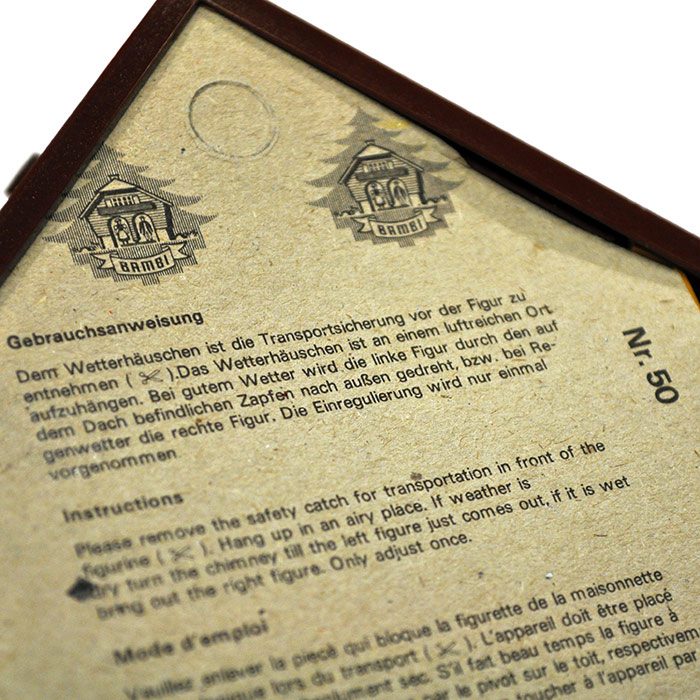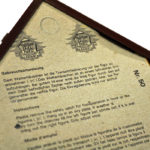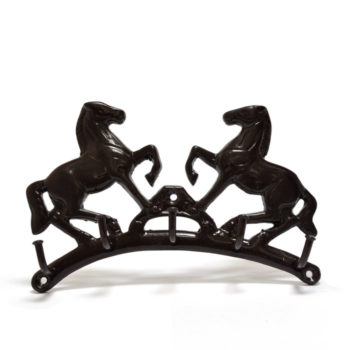The traditional Wetterhäuschen or alpine thermometer
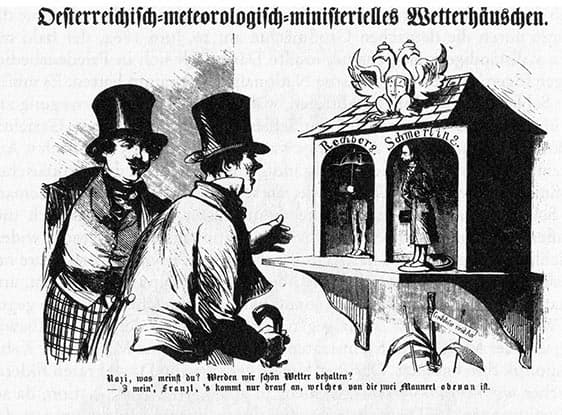
This curious object is a Wetterhäuschen, a very popular souvenir in Alpine countries, especially in Germany, Switzerland and Austria. Its tradition dates back to the early 19th century, and there is evidence that these devices were sold in small markets as early as 1735.

The wetterhäuschen is like a small weather station with the dual function of thermometer and hygrometer. In addition to indicating the temperature, it also shows whether the weather is wet or dry. It is decorated like a typical Black Forest alpine chalet, with an A-frame roof, a small garden, wild animals and trees.
The house always has two adjoining doors with two movable figures: on the left side there is a girl and on the right side a boy. Depending on the weather, one of the two figures will move outside, while the other one moves inside the house.
How the German weather house works
The mechanics of the wetterhäuschen is very simple. A system of ropes is installed inside the house that is very sensitive to the humidity in the air, as well as a rotating disc and a spring. The mechanism allows the ropes to contract or expand, making the disc rotate and moving the figurines.
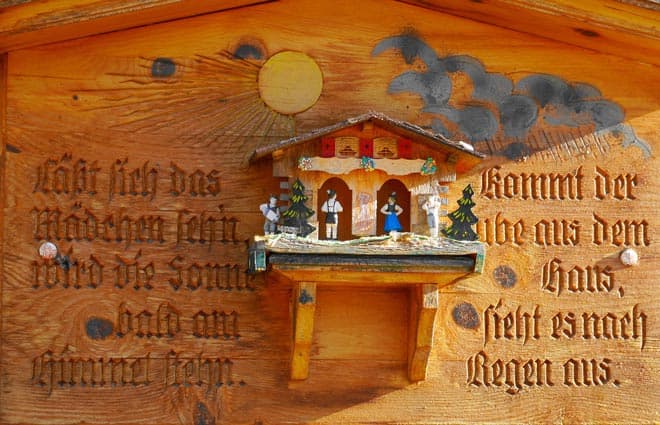
In order to work properly, the alpine thermometer must be installed outdoors or in a well ventilated place. Thus, as if by “magic”, the girl (called “Sonnenfrau” or sun woman) comes out of the house when the weather is sunny and dry, while the boy (“Regenmann” or rain man) comes out to indicate rain. In between the doors of the house, the thermometer will indicate the temperature in both Celsius and Fahrenheit.
In the old days, many of these devices came with a built-in wind-up clock and some even had a barometer, which also measures the atmospheric pressure. They were made of wood, but this reduced the lifespan of the object. Nowadays German weather houses are made of plastic and have a nostalgic kitschy touch of the memory from our ancestors. They are a curious and different gift for children interested in science and meteorology.

